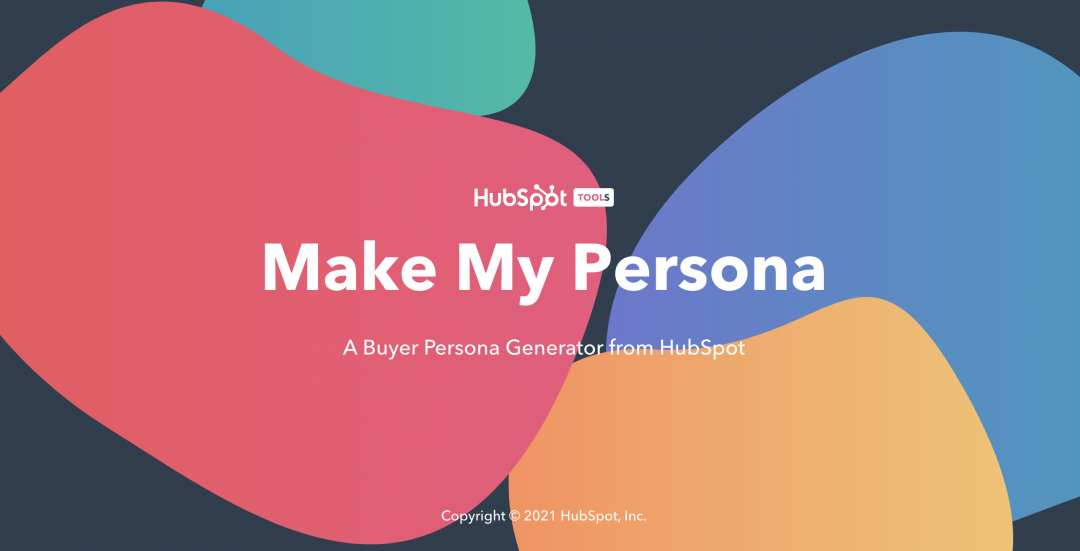Thousands of agencies have had the same realization over the past 20 or so years: customer engagement is how you succeed.
Targeting the right audience using demographics is a starting point, but you have to take that one step further by appealing to those demographics as real people (because they are).
Your buyers have a ton of options, and personalizing your offer is the differentiator that gets you through to them. It’s a conversation, and you have to know who to talk to and what to talk about to hold your end of it.
If you’re here, it’s because you want to build your best buyer personas so you can personalize your content marketing to reach more high-value customers at each stage of the buyer journey—and retain them.
You want to make sure your marketing team feeds the best leads to your sales team.
Well, we’ve got you.
We’ll address the benefits of buyer personas, then use a buyer persona template to draw exactly what your target customer looks like. Then we’ll build out 7 different areas where you can dive deep to really personalize that snapshot in a way that converts.
Get brand new conversion strategies straight to your inbox every week. 23,739 people already are!
What is a buyer persona?
A buyer persona is also called a customer persona, audience persona, or marketing persona. This is your ideal customer and it’s one of the first things you figure out as part of your marketing strategy.
A buyer persona is how you put a face on the people most likely to buy what you sell.
A good buyer persona uses segmentation to divide slightly different buyers into different groups (or segments) so you can take your overarching personalization and really fine-tune the type of experience they have with you.
Every buyer persona has a story, and it’s your job to create a happy ending.
To do that, you’ll gather insight from existing customers and conduct market research to discover their pain points, their demographic data, their job titles, annual salary, parental status, and favorite social networks.
You’ll discover if your best customer base is full of decision-makers and influencers, or students or tradespeople. You’ll know what car they drive, if they lease or rent, and if they bike to work or Uber.
Do they shop in person or online?
You’ll know if they’re young execs, parents, or retirees, dog or cat (or hedgehog) owners, and what their industry, education, and age range is. You’ll learn if they read blogs or watch videos or listen to podcasts, and if they freelance, work for a small business, or represent a multi-national corp.
All of these things drive toward what type of person they are so you can make relevant content for them and tailor your marketing messages. Doing that is essential for lead generation. And lead generation is essential for conversions.
What are the benefits of using a buyer persona?
You don’t do anything unless the benefits are clear, and people generally aren’t excited about building buyer personas.
But here’s why you go through the exercise:
- You’ll expand your reach in the right direction (by nailing your target audience)
- You’ll appear authentic to your audience because you can speak to them on a personal level
- You’ll create fans in the short term and brand advocates in the long term
Oh, and there’s this:
“According to a Marketingsherpa research, by identifying buyer personas, website visits can increase by 900%”
And this:
“71% of companies who exceed revenue and lead goals have documented buyer personas.”—boardview.io
How do you create a buyer persona?
You have to know who you're marketing to before you reach out to make a sale. And you have to know how to say highly-relevant things to get their attention.
Then you have to create a personal, unique experience for them that addresses their objections and makes them feel like they’ve found a home with you.
You spend time on all that stuff because you don’t want to waste time on leads that won’t convert.
Start by asking these questions:
- What do they do?
- What’s their industry (and the size of it)?
- Who do they report to?
- What is their education, career level, age?
- Where do they go for information?
- What is their biggest challenge?
- What does value look like to them?
- What are their goals?
- What is their budget to fix their problem and reach their goals?
- How do they measure success?
Use a buyer persona template
If you have Powerpoint or Google Slides, there are hundreds of buyer persona templates out there. But my favorite way to build a basic buyer persona is with HubSpot’s interactive 7-step Buyer Persona Generator. It’s an online tool with a beautiful UI/UX (user interface/user experience).
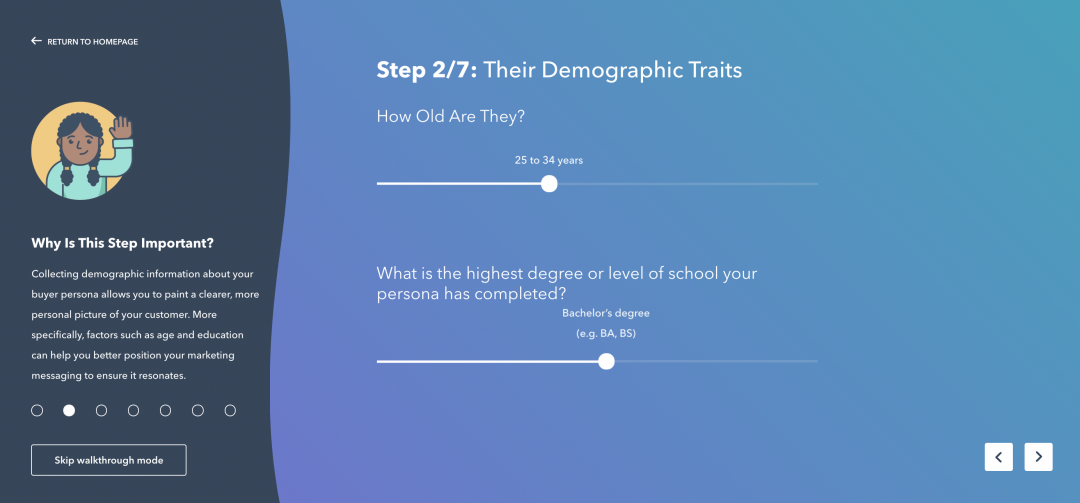
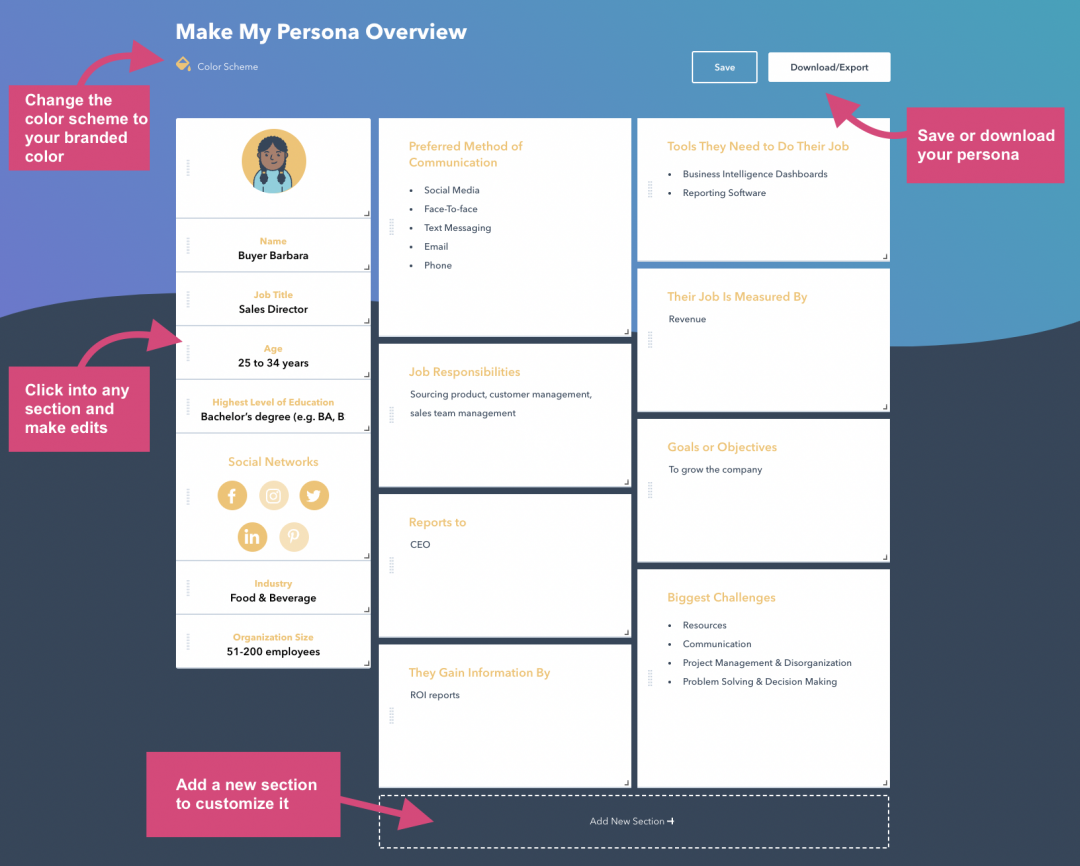
Hooray. You have a starting buyer persona template (that looks more like an infographic than a bullet list—yay) and a rough idea of the types of customers you’ll target to drive up your conversion rate.
But, chances are, while filling out those sections you realized you have more work to do.
That’s what the rest of this post covers.
Let’s look at 7 things you can do to super-target your buyer persona, using a fictional mobile UX design agency called UXtreme 😎
1. The human element
Surprise. Your buyer persona is a real person.
A persona is somewhat fictional, but that’s only because you make a caricature of a real group of people in order to create a real relationship that gets you closer to your potential clients.
Generic data doesn’t make the same impression as a one-pager that brings to life a male, aged 30-40, whose interests include Game of Thrones, mixed martial arts, and luxury car detailing.
Give your person a name, a face, and a career. Talk about his family and where he lives. Describe what he does in his downtime…anything that’s relevant. Bring him to life.
I’ll start.
Meet Noah Richards:

Age: 31
Status: Single, no kids
Job Title: Marketing Manager
Salary: $90k/year
Noah is an adrenaline junkie living in Colorado, working for a tour company called Rocky Rivers. They specialize in white-water rafting excursions for groups of 5 or more.
A deliberate buyer, he always takes time to weigh his options regarding any business decision. He’s a webinar and podcast junkie whose social media preferences mostly stop at YouTube and Instagram but also extend to LinkedIn.
He leads a team of 3 people and has full-decision making power as a co-founder, although he always consults his fellow board members. He’s interested in psychology and his ultimate pet peeve is wasting time (and semicolons… and toilet paper that goes under instead of over the top).
His friends and family call him a go-getter, and he’s never one to back down from a challenge. He’s driven (and fun).
You can use relevant customer data like purchase history and industry type, but don’t worry about getting it exactly right.
And adding humor is always a boring-buster.
Noah is already more useful than demographics data alone. He’s someone you can talk to now ; he's less of a statistic.
You probably won’t need to get any customer insight on this one. The point here isn’t to perfectly guess your prospect’s career details, but rather their mindset when entering your sales funnel.
Ask something open-ended like:
“What can you tell me about yourself? Career, family, hobbies, etc.”
2. Context
Everyone has an angle.
The context of the interaction between your prospect and your company affects how you’ll market to them, what messages will work, and how much you really want them as your customer.
We know what he looks like and what he does, but who is he? What is he really after? How can we add some sunshine to his workday?
Look beyond the product or service that you’re trying to sell him. Think about what he’s trying to accomplish, and what’s most important to him, both personally and professionally.
Noah’s company, Rocky Rivers, has seen a steady increase in tour bookings over the past 6 months, especially from out-of-towners. He founded the company with 3 of his buddies, so he has a strong stake in its success.
Their next big goal is to open up another location in North Carolina, which happens to be where Noah’s family lives. To this point, most of their business has been from word of mouth, but they’re starting to see an influx of organic traffic, and they’d like to convert more of that traffic.
Noah and his co-founders decide that it’s time to optimize their mobile design to better convert mobile traffic.
Their immediate goal: To hire a top mobile UX design agency to optimize the Rocky Rivers mobile sales funnel.
You’re creating a real situation that needs solving.
Emotion, the biggest thing missing from demographics, starts coming into play. How he reacts to your brand isn’t all about his stats; it’s more about what’s at stake.
You can create a situation as I did here, but asking your customers what was at stake can show you trends about what’s on their plate when they come to you.
Ask it in a way that reveals a bit about their business: What is the biggest need you’d like our product to solve?
Or you can lay it on them:
“How can we surpass your expectations?”
3. Key decisions
Nobody wants to be caught off guard. It’s stressful. Like having to order when everyone else at the table was ready, but you weren’t.
A successful conversion depends on you making the decisions easy and as painless as possible for your prospects. If your prospect is prepared and in the buying mindset, you can shoot for that conversion.
If they’re not, and you try anyway, you run the risk of damaging the relationship and scrambling to recover, potentially burning a bridge that will be a pain to repair.
To identify the key decisions your prospect has to make, look at the transition points in your sales funnel. In its most basic form, your funnel probably looks something like this:
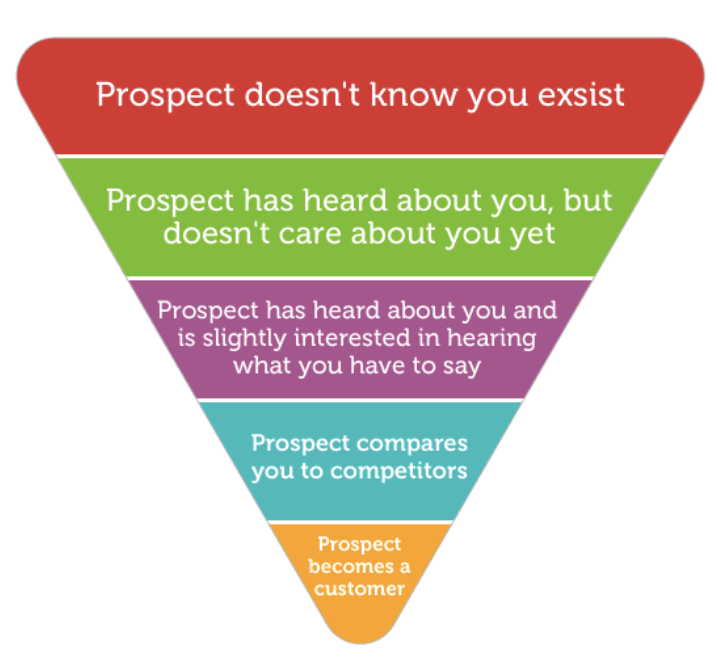
In order for your customers to successfully move down the funnel, they’ll need a certain level of knowledge at each stage. It’s up to you to give them resources and guidance.
To create a template of how you’ll make this happen, point each key transition in your sales funnel to a specific interaction with your company.
Using the same graphic, this is how UXtreme guides Noah through their funnel (the arrow moves him forward):
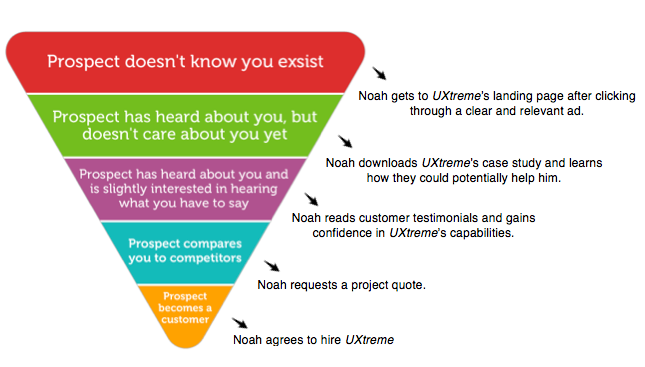
Note that there will be smaller progressions in between these main steps. For example, in the days after Noah read your case study (near the top of the funnel), he received the new subscriber email series that provided clear and useful information about the company and service (not a sales pitch).
UXtreme gained Noah’s trust, making it more likely that he’ll complete the next steps of researching the company’s capabilities and requesting a project quote.
The goal is to make it so these decisions are made with confidence and without pressure. Remember that people don’t move down a sales funnel because of gravity (although that would be amazing).
Prime your customers. Usher them toward a quote request through helpful information and resources. Be helpful, and they’ll gain the confidence to move forward.
Asking your customers for insight on this can be pretty straightforward. You can try:
“What made you ultimately decide to hire us?”
Or you can ask about specific interactions:
“What about our case study helped you the most?”
4. Limitations
Sometimes a customer can’t disclose everything or explore all of the options you offer. It’s not that they don’t want to…they just can’t.
It could be a number of things: family commitments, budget constraints, company infrastructure, existing projects, etc.
It’s not something we often worry about when pushing a product or service, but you need to beware of the factors that could require special attention and maybe even a temporary change in protocol.
Let’s catch up with Noah.
As you may have guessed, there are a few things that his pursuit for awesome mobile UX is limited by:
- The company’s mandated style guide must be followed by all vendors
- All order pages must be approved by sales and legal
- Project budget must not exceed $15,000
Most limitations are going to be nothing outrageous, but the quicker they’re realized, the quicker you can find ways to adjust your buyer persona and sales strategy to keep these prospects in the pipeline.
You don’t want to write off a customer if you don’t have to.
- The company’s mandated style guide must be followed by all vendors.
UXtreme agrees to work with an in-house designer to coordinate with the company style guide. - All order pages must be approved by the sales and legal department.
UXtreme prioritizes the design of pages needing approval to reduce idle time. - Project budget must not exceed $15,000.
UXtreme customizes a pricing plan to fit Noah’s budget while still meeting requirements.
Most of your prospects will have unique limitations, but you can still ask questions to find trends that you should be prepared for:
“What outside factors do you keep in mind when making purchase decisions?”
Or be straight-up:
“What limitations do you have when hiring a new vendor?”
5. The anti-goals
It’s not that easy to list all the qualities of a person you’d like to fall in love with. But it’s super easy to name the qualities of someone you can’t stand to be around.
Anti-goals are more than obstacles in the way of your customer’s goals. There are a few things that will turn a “maybe” or “possibly” into a straight-up “NO.” It only takes one bad flub to turn someone away forever.
- Noah doesn’t have time for hour-long brainstorm sessions.
- He needs an agency that knows marketing, understands the sales funnel, and will bring fully developed ideas to each call.
- If they’re unable to do this, Noah is not interested. Noah absolutely hates feeling like his time is being wasted.
You can use your buyer’s angle to infer some of the game-enders to avoid, but this is really where your customer survey answers should take over.
Two questions that will help discover those no-nos:
- What made you leave your previous agency?
- What are your deciding factors in hiring a new agency?
6. Reverse chronology
Laying out your prospect’s journey from start to finish is great to conceptualize and communicate your customer experience, but using a reverse chronology will help you see potential holes where your customer could get lost.
Doing it in reverse forces you to give each step in your customer acquisition plan a direct action or reason for it happening.
You can’t rely on momentum when you’re crawling up the slide.
Here’s the most detailed guide I’ve seen on creating a reverse chronology for your buyer. Use it.
7. Reasonable alternatives
A reasonable alternative doesn’t always mean losing business to your direct competitors.
It could be that your prospect has decided to push the project back a few months, or maybe they’re going to try to handle it in-house. Or maybe they actually just gave their business to your direct competitors.
Whatever the case, be honest about where your prospects may be going.
List out all of the options your customer has and think about the type of experience they’d have with each one.
Come up with ways that you could offset these alternatives, but keep in mind that sometimes inaction is the best action.
Since mobile sales make up the smallest portion of his sales, Noah thinks that maybe he can get away with putting more money into other platforms to offset a non-optimized mobile experience.
UXtreme runs the numbers for Noah and shows him the potential revenue he would be missing out on by ignoring mobile, and how soon he could expect his return on investment.
A small agency based in Russia quoted Noah half of what UXtreme was charging.
UXtreme explains its process and strategy in detail. When Noah insists that the price is too high, even with the lower-priced alternative package, UXtreme wishes him well and offers a contact for future collaboration.
Customer insight will shine here.
Some won’t want to share this personal information, but most will have no problem telling you what they could be doing instead of buying your stuff.
Go ahead and ask:
“What other services do you subscribe to?”
and
“What would stop you from subscribing to us?”
Or if you really feel like sweating:
“Describe a time when you almost took your services to another company.”
Yikes!
Take those honest answers like grounds in your coffee and use them to carve an even better buyer persona so you can make the most sales.
The best buyer personas make the most sales
So there you go.
Buyer personas are an evolving marketing asset that takes time and attention. Great digital marketing turns potential customers into actual customers by incorporating buyer personas into the overall content marketing strategy.
Create marketing campaigns around your buyer personas. Focus your product development around them, target them with Google ads, and cater to them.
Remember that a buyer persona is a story of your ideal customer and you’re the author.
Create a real-life identity to describe that buyer and walk with them through their customer journey.
That’s how you’ll know where to find them, how to reach them, and how to make it obvious to them that your company’s product or service is the best way to get over their stumbling blocks—filling your conversion funnel in the process.
Conversion funnel? We talk about that next.
